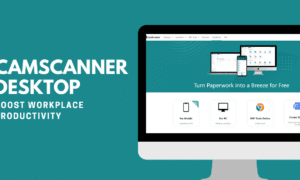How to Use Big Data to Gain a Competitive Advantage in Your Industry?
What does it take to leverage Big Data for a competitive edge in today’s fast-paced industry? Insights from a Chief Marketing Officer and a tech lead in software engineering reveal crucial strategies. This article presents fifteen expert tips, starting with encouraging cross-functional data collaboration and concluding with automating data-driven sales prospecting. Each insight offers a unique perspective to help businesses stand out with data-driven strategies.
- Encourage Cross-Functional Data Collaboration
- Build Scalable Data Infrastructure
- Focus on Contextual Data
- Understand and Act on Key Metrics
- Use Data Triangulation
- Pinpoint Specific Data Sets
- Integrate Data from Multiple Sources
- Turn Data into Customer Insights
- Analyze Internal Customer Data
- Identify Human-Centric Data Patterns
- Ask Better Questions for Better Insights
- Promote Popular Features
- Leverage Predictive Analytics
- Make Data Actionable for Clients
- Automate Data-Driven Sales Prospecting
Encourage Cross-Functional Data Collaboration
We realized that collaborative data insights-sharing anonymized patterns across teams-led to faster product improvements. Instead of confining insights to one department, we let every team access relevant analytics, encouraging them to uncover opportunities from a fresh perspective. Big Data is most powerful when it’s democratized.
Don’t silo data between teams-encourage cross-functional collaboration so different departments can interpret data from fresh angles. For us, it was the marketing team that first noticed trends in product usage, which led to refining onboarding for new users. The most innovative solutions often come from unexpected sources within your organization.
Alari Aho, CEO and Founder, Toggl Inc
Build Scalable Data Infrastructure
As a senior software engineer working on large-scale distributed systems, I’ve gained valuable insights into leveraging big data for competitive advantage.
We’ve learned that building scalable data infrastructure from the start is essential. We use technologies like Apache Hadoop for distributed storage and processing and Apache Kafka for handling real-time data streams. This allows us to process petabytes of data efficiently as the business grows.
For implementing stream processing, tools like Apache Flink or Kafka Streams have been game-changers. It allows us to react to market changes instantly, adjusting our services based on real-time data rather than relying on outdated batch processing.
We’ve also integrated machine learning into various aspects of our operations. The key is having both the data and the infrastructure to train and deploy models at scale.
With the increasing focus on data privacy, an organization needs a robust system for data governance, ensuring data security and that access to data is controlled within the organization with permissions.
Businesses should start investing in data strategies from inception, evolving them as the business grows with clear objectives, investing in the right talent, and continuously iterating and innovating.
Tejaswi Agarwal, Tech Lead – Software Engineering, Uber
Focus on Contextual Data
One thing I realized with Big Data is that it’s not about having the most data—it’s about mastering the right data. You can drown in metrics and still know nothing useful.
The real game changer? Contextual data that’s relevant to the exact moment of decision-making.
I stopped trying to gather everything and focused on the small windows of behavior that actually move the needle—like noticing when a user hesitates on a purchase or drops off at a specific step in the funnel.
From there, I create micro-strategies that hit precisely where they matter.
Advice? Start small—track one hyper-specific action that directly impacts revenue, nail that, then expand. You’ll be surprised how much of a competitive edge you can gain just by getting surgical with your data focus.
Austin Benton, Marketing Consultant, Gotham Artists
Understand and Act on Key Metrics
Early on, we realized that it’s not about having the most data, but understanding what it tells you and how it can directly influence decision-making. Customer usage patterns helped us optimize our service offerings, allowing us to predict maintenance needs and improve customer satisfaction by being proactive.
Another valuable lesson is the need for flexibility. Data trends change, and it’s crucial to review and adjust strategies regularly. We’ve adopted a continuous-improvement mindset, using real-time data to refine our operations and marketing efforts.
I suggest starting with clear goals for businesses looking to differentiate themselves through data-driven strategies. Identify the key metrics that truly matter for your business and focus on those. Also, invest in the right tools and talent to interpret the data effectively. Lastly, use data to personalize customer experiences. By understanding individual needs and behaviors, you can deliver tailored solutions that set you apart from competitors.
Big Data is a powerful tool, but its true value lies in how you use it to drive better business outcomes.
Ryan Kelly, Chief Marketing Officer, Easy Ice
Use Data Triangulation
We’ve developed a custom algorithm that analyzes purchase patterns across different demographics and seasonal trends. With the use of this technology, we can more precisely predict demand for both unique products that have the potential to become blockbusters, and our standard items, such as stylish radiators and opulent taps. We have been able to maximize our inventory and guarantee that we are always one step ahead of our consumers in meeting their needs before they ever realize they exist, thanks to this strategic strategy.
For businesses aiming to carve out a competitive edge through data, here’s my tip: use data triangulation to confirm your results. Use several data points to cross-verify the insights you obtain rather than depending just on one. To build a solid picture of our market, we at HOUSE OF ENKI integrate sales data, client reviews, and outside market research. We can avoid common problems that come with skewed data readings with this multi-dimensional view. This way, we can make sure that our strategies are both new and based on solid evidence.
Dimitri Zobnin, Managing Director, House of Enki
Pinpoint Specific Data Sets
One of the biggest lessons I’ve learned from using Big Data to gain a competitive edge is that it’s not just about having more data—it’s about having the right data. A lot of businesses make the mistake of gathering everything and drowning in irrelevant information. Instead, the real advantage comes when you can pinpoint which specific data sets will drive decisions that lead to tangible results, like identifying niche customer preferences or gaps in the market.
Another crucial factor is speed. Data-driven strategies are often too slow to make a meaningful impact because businesses spend months analyzing and refining models. We found that rapid experimentation—making data-driven adjustments in near-real-time—helps stay ahead of the competition. Think of it as running small tests, evaluating their outcomes quickly, and continuously refining your approach based on the feedback loop.
For businesses looking to differentiate themselves, my advice is to focus less on accumulating vast amounts of data and more on creating a narrative with your data. Insights are only valuable when they tell a story that helps you connect with your audience or streamline a specific process. A well-timed, well-targeted strategy will beat an elaborate, data-heavy approach every time. Remember that less is often more when it comes to data, as long as it’s relevant and actionable.
Raviraj Hegde, SVP of Growth & Sales, Donorbox
Integrate Data from Multiple Sources
I’ve learned that the key is not just collecting data, but using it strategically to inform decisions. One crucial lesson we’ve learned is the importance of integrating data from multiple sources. By combining production data with customer feedback and market trends, we’ve gained insights that have allowed us to stay ahead of the curve. For instance, we noticed a pattern in our aerospace clients’ ordering habits that led us to develop a new line of heat-resistant tags before our competitors even realized the need.
Here’s a practical tip: Start small and focus on a specific area where data can make an immediate impact. We began by analyzing our production-efficiency data, which led to a 20% increase in output for our custom nameplates without additional resources. I recall when we first implemented predictive maintenance using Big Data analytics. By analyzing equipment-performance data, we reduced unplanned downtime by 35%, significantly improving our ability to meet tight deadlines for industrial placard orders.
For businesses looking to differentiate themselves, my advice is to use data to enhance customer experiences. We’ve used purchase history data to create personalized recommendations for our clients, much like how we customize our metal tags for specific applications.
This approach has increased repeat orders by 25%. Remember, leveraging Big Data is like creating a precisely engineered identification tag—it requires careful planning, the right tools, and a clear purpose. By focusing on actionable insights and customer value, you can turn data into a powerful competitive advantage.
David Primrose, President, Metal Marker Manufacturing
Turn Data into Customer Insights
Big Data has completely changed the way we engage with customers and make strategic decisions. It’s no longer just about knowing basic demographics—understanding your audience on a deeper level is a game-changer. We can now see behaviors, preferences, and patterns we couldn’t spot before, which helps us create more personalized and effective marketing campaigns. For example, knowing when your customers are most active online means you can share content at the right time, driving up engagement and conversions. The main takeaway? It’s not just about collecting data but turning it into insights that lead to meaningful customer interactions.
To really succeed with Big Data, clear goals are a must. Without a plan, it’s easy to drown in information. Focus on specific business needs, like improving customer retention or launching targeted product recommendations. When your data analysis aligns with these objectives, it keeps the whole team on track and makes collaboration smoother.
It also helps to start with the right tools. A Customer Data Platform (CDP) can bring together data from multiple sources, giving you a complete view of your customers. Plus, it can provide predictive insights to fine-tune your strategies. Adopting agile methods, like testing and tweaking as you go, allows you to quickly adapt and keep improving. Ultimately, it’s not just about having data—it’s about using it to move the business forward, stand out from the competition, and keep customers happy.
Dana Brown, Head of Marketing, Shortcut
Analyze Internal Customer Data
As an experienced digital marketer, I have leveraged data to gain advantages for clients. For a SaaS startup, we analyzed how customers engaged with their product and found that 60% never used a key feature. We redesigned their onboarding process to highlight this, leading to a 32% increase in activation rates.
For a healthcare provider, we analyzed patient data and found that 25-34-year-olds had the lowest appointment show rates. Targeting this group on social media with messages on the importance of health and wellness led to a 16% increase in appointments booked by this age range in 3 months.
My advice is to look inward at your own data, not just outward at industry trends. See how customers actually engage with your business and find the gaps. Then develop hyper-targeted, data-driven strategies to improve key metrics. It does require investment in analytics tools and skills, but the ROI can be huge. Your competition likely hasn’t optimized to the level that big data enables. Seize the opportunity. As someone whose work centers around using data to optimize marketing campaigns, I have a few insights to share.
One e-commerce client was struggling to gain traction, so we analyzed their site data and customer interactions. We found that their product pages lacked social proof and clear benefits. Adding customer reviews, testimonials, and clearer product benefits led to a 32% increase in conversions in the first month.
For B2B clients, we look at how target accounts engage with their content and ads. One client found that their competitors’ content resonated more, so we revamped their content strategy. Within 3 months, target account engagement rose 64%, and sales increased 23%.
My advice: start gathering customer data and look for patterns. See how people engage with your brand and what motivates them to convert or churn. Use those insights to optimize your marketing and product. You may need to invest in analytics tools, but the ROI can be huge. Don’t play catch-up—take advantage of data before competitors do.
Luke Heinecke, CEO, Linear
Identify Human-Centric Data Patterns
One thing that I really got from using big data is that you can’t just work on numbers. You have to identify patterns that reflect the human side of your business. For us, the biggest bonus was when we stopped following every single trend and started tracking the behaviors and preferences of our clients based on their growth journey. Identifying those patterns allowed us to design programs in a manner that resonated better with them. You don’t collect information that will keep coming back but experience the narrative of data—the narrative that drives you forward with purpose and understanding.
My tip for companies looking to differentiate themselves through data is to start with the emotional intelligence of your data. And don’t take the numbers in your head for granted—ask yourself, what are they doing for the people you serve? What is its impact on your communication with them?
Once we began to use this lens, we found ourselves thinking differently about our coaching programs and making decisions that are more in touch with our clients’ desired outcomes, rather than the metric. We had a competitive advantage with this human-centered mindset.
Alexander Henschel, Digital Marketing Manager, Boulevard
Ask Better Questions for Better Insights
Big Data is like having the ultimate backstage pass to your industry—you see everything that’s going on, but only if you know where to look and how to use it. One lesson I’ve learned (sometimes the hard way) is that collecting data isn’t the same as understanding it. It’s like owning a Ferrari but never taking it out of first gear; you’re not really getting anywhere.
Lesson 1 is “ask better questions, get better answers.” It’s not just about the volume of data; it’s about asking the right questions to guide your analysis. Early on at Jimo, we were swimming in user data, but instead of getting obsessed with vanity metrics like page views or sign-ups, we focused on the behavioral data—how users were actually interacting with our onboarding process. We asked, “Where do they get stuck? What features make them click? What drives them to come back?” That laser focus led us to insights that drove real improvements, not just dashboard decorations.
Lesson 2 is “turn insights into action, fast.” Data is like fresh produce—it’s only valuable when it’s used quickly. One mistake I see businesses make is analysis paralysis, where they spend forever looking at data and never actually move the needle. We took the approach of rapid prototyping: see an insight, test a hypothesis, tweak the product, rinse, and repeat. For example, when we saw that users who personalized their onboarding had higher activation rates, we doubled down on those features immediately. Result? A spike in user engagement that left the competition eating our dust.
My advice for businesses looking to differentiate themselves: Don’t just be data-driven; be data-agile. Big Data isn’t about having the most numbers; it’s about making the smartest moves. Use it to predict trends, personalize experiences, and outmaneuver the competition with insights they haven’t even thought to look for yet.
And finally, don’t forget the human element—data is powerful, but it’s still people who make the decisions. The companies that win with Big Data are the ones who mix cold, hard analytics with a sprinkle of gut instinct. After all, even the best algorithms can’t replace a little human intuition and a dash of boldness.
Thomas Moussafer, Co-Founder, Jimo
Promote Popular Features
Using Big Data taught me that it’s not just about collecting a lot of information, but understanding what matters and acting on it. For instance, when we analyzed how customers used our AGI product, we found that some features we thought were essential weren’t as popular, while others that we hadn’t highlighted got more attention.
We adjusted our focus, promoting the features people actually liked, which led to better user engagement. For any business, start by figuring out what you want to learn, then use the data to find those answers. Make sure everyone on the team understands the insights so they can use them effectively—not just the data experts.
Siddharth Kashiramka, Product Leader, AGI
Leverage Predictive Analytics
One of the main things we learned when using Big Data to get ahead of the competition is that predictive analytics can really drive customer retention and satisfaction. By looking at historical customer behavior and purchase patterns, we built predictive models that allowed us to anticipate customer needs before they even asked for it. For example, we could identify which customers were about to churn and engage with them with personalized offers or services. This proactive approach increased customer loyalty, reduced churn, and gave us an edge in a very competitive market.
If you want to use data to stand out from the competition, I recommend using predictive analytics to predict trends and customer behavior. Start small by identifying where predictive insights can add value, for example, customer retention or inventory management. Also, make sure your data is clean, well-structured, and representative of the trends you are trying to predict. Investing in talent with data-analysis skills or partnering with external experts will help you get the most out of Big Data for your business growth.
Dan Bowen, Founder, Bowen Media
Make Data Actionable for Clients
One thing I’ve learned is that data is only valuable if it’s actionable. We’ve collected years of data on equipment resale values, operating costs, and maintenance histories, which allow us to provide more accurate and nuanced valuations.
However, more than having the data, we must also know what to do with it. We’ve built a tool that helps our clients forecast future equipment value based on their own usage patterns and market shifts, and that sets us apart from our competitors.
My advice? Focus on how you can use data to directly benefit your clients in a way that they can’t get anywhere else. You don’t need to overwhelm them with numbers. All you need to do is simplify important insights so they can make better business decisions.
Tracie Crites, Chief Marketing Officer, HEAVY Equipment Appraisal
Automate Data-Driven Sales Prospecting
While data is abundant, using it strategically is still challenging for many companies. However, not integrating data into your daily workflow is no longer an option—you can either figure out how to do it or lag behind your competitors as they move into new industries and niches.
Let’s take public-web data on companies and jobs as an example. Finding new sales prospects used to be time-consuming. Right now, you can automate prospecting and use a cleaned dataset of millions of companies enriched with additional data points that you can easily filter.
Our sales team uses job-posting data to identify investment firms hiring data engineers. Every day, we automatically get a list of prospects we can contact with our offering.
Data frees time for sales executives and helps them focus on what really matters: building lasting relationships.
Ugnius Zasimauskas, Sales Lead, Coresignal
Related Articles
- Harnessing Big Data for Business Growth – TechBullion
- The Role of Big Data Analytics in Driving Business Success
- Integrating Data Analysis into Your Business Workflow … – TechBullion



































